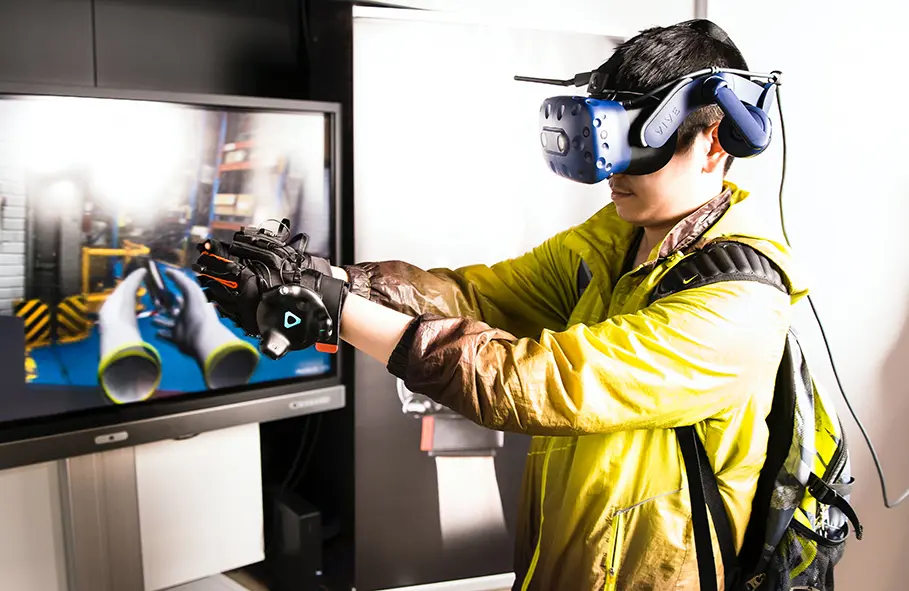How Tactile Devices Can Improve Children’s Learning
by Becki Robins, Advanced Science News / May 23, 2024

Traditional classroom education has looked much the same for decades — teachers lecture and students are expected to listen. But this isn’t always the best way for children to learn, especially younger kids who may have difficulty staying focused for long periods of time.
Research has discovered that children retain more information when lessons stimulate multiple senses. For example, looking at a picture or a chart may be better than simply listening to a teacher talk about a subject or reading about it in a book. And touch, a new review study published in Advanced Intelligent Systems has found, may also contribute to improved learning in school-aged children.
“Haptic feedback is a technology that generates tactile sensations or forces to provide feedback to the user. It’s delivered through components like vibration motors and actuators, enhancing user experience,” said Amal Hatira, lead author of the study published in Advanced Intelligent Systems.
“Researchers believe incorporating haptic feedback into educational devices can help children learn by engaging multiple senses, providing tactile confirmation of actions, and encouraging interactive learning experiences.”
Tactile Learning Engages Multiple Senses
Hatira and her co-authors analyzed 12 papers covering a range of haptic or tactile learning applications for children between the ages of three and 18, including handwriting, reading, STEM education, and collaborative learning.
The papers they included focused on two important components: tactile and kinesthetic feedback. Tactile describes interaction with objects through direct touch while kinesthetics describes the physical sensations of movement and force.
The devices used in each of the 12 studies varied significantly in what they aim to accomplish and how they provide feedback. For example, in one study, researchers tested a device called SpARklingPaper, which combines visual feedback from a tablet device with the real-world tactile experience of pen and paper. In another study, researchers tested a haptic device called Phantom Omni that uses force feedback to help visually impaired children interact with 3D shapes.
Hatira said handwriting is one of the areas where this learning strategy seems to provide the most benefits.
“Haptic feedback aids in fine motor control and handwriting proficiency, providing guidance for learners to improve their writing abilities,” she said. The other two areas where haptics seem to have the most benefit, she said, include geometry/spatial recognition and collaborative education environments.
Problems and Limitations
Robb Lindgren, associate professor at the University of Illinois Urbana-Champaign, who was not involved in the study, said the study sheds light on an important but neglected subject. “It’s an area that I personally don’t think gets enough attention,” he said.
But Lindgren also added that it’s still not clear how much the technologies discussed might be contributing to learning. “The article seems to kind of assume that there’s this inherent relationship between learning and engagement, that if you achieve an engaging experience for students, that sort of naturally translates into learning,” he said. But this may not always be true.
“There are plenty of experiences that we have that are just entertaining or they’re engaging in ways that are not necessarily going to contribute to learning,” he continued. “We have to go a little bit deeper than that when we’re talking about the advantages of these kinds of tools.”
The use of tactile learning in education may also have other limitations. “As children age, incorporating haptic feedback into their learning experiences might become more difficult,” Hatira said. “For example, as the complexity of educational material expands with age, providing haptic feedback that successfully complements higher-level concepts and activities becomes more challenging.”
Technology also comes with a price tag, and haptic devices may not be affordable in educational settings with limited resources. In their paper, the researchers also noted that the cost of custom-made haptic devices could be prohibitive compared to the cost of devices that are already widely available.
Future Steps
Lindgren said haptic technology has a lot of potential beyond simply trying to provide feedback that aligns with experiences kids might have in the real world. “I think one of the opportunities is to start thinking more unconventionally about how we use haptics,” he said. “Maybe you’re looking at a traditional diagram or simulation, but you’re getting haptic feedback as you’re looking at it that gives you an additional set of cues to understand and make meaning out of the simulation.”
He also said he thinks researchers shouldn’t be too quick to dismiss custom-made devices as too costly for education. “I think there’s actually an opportunity here […] if we’re going to design new technologies that we want to use in educational contexts, then we should be having partnerships and collaborations between educators, teachers, and the designers of these technologies.”
Although the research into haptics in education is still limited, the study brings to light some of its many possibilities and areas for future research. “Haptic feedback has the potential to make learning more accessible, inclusive, and effective for children across a wide range of subjects and learning settings,” said Hatira.
Still, it may be a while before parents can expect to see these devices become standard in the classroom. “While some schools and educational institutions have begun to explore and implement haptic feedback in specific learning environments and specialized academic programs, its widespread adoption remains relatively experimental,” said Hatira.
Reference: Amal Hatira, et al., Touch to Learn: A Review of the Impact of Haptics on the Development of Skills and Enhancing Learning Abilities for Children, Advanced Intelligent Systems (2024). DOI: 10.1002/aisy.202300731
